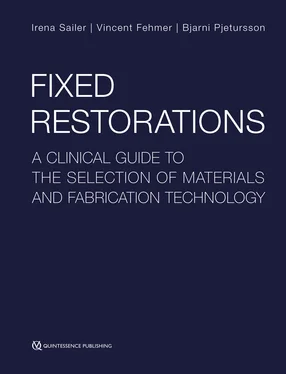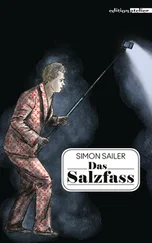Today, 3D digital imaging technologies such as computed tomography (CT) (previously used), and CBCT (more recently used) make it possible to plan and carry out the positioning of dental implants using appropriate 3D positioning software, and to transfer the information from the 3D imaging datasets to the surgical guides. These technological advances have increased the safety of dental implants, especially when placed in narrow spaces or in close proximity to critical anatomical structures (Fig 1-4-10).
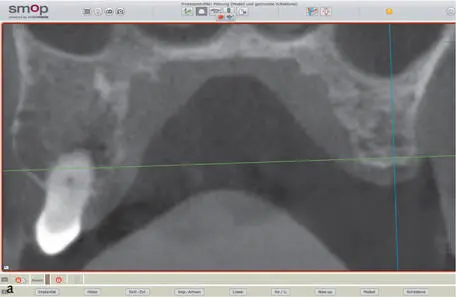

Figs 1-4-10a and 1-4-10b CBCT for the 3D evaluation of the bony situation and the proximity to critical anatomical structures (eg, the maxillary sinus), crucial for the implant planning.
The 3D implant position is, hence, a crucial factor for the esthetic outcome of the implant restoration. Furthermore, it can influence the biologic and functional outcomes. The Consensus Conference of the 11th European Workshop on Periodontology thus issued a consensus statement on the primary prevention of peri-implantitis, which includes the following recommendations 25: (1) implant placement must allow for proper personal cleaning; and (2) the superstructure must allow for good hygiene, ie, it must be free of niches and undercuts that can cause tissue trauma. Reviews of the literature have shown that the different types of superstructure fixation (cemented versus screw-retained) were associated with different rates of functional and biologic complications 26. Cement excess with cemented restorations induces specific biologic risks and can play a role in the etiology and pathogenesis of peri-implantitis 27 , 28.
Therefore, dental implant planning must always start with the diagnostic determination of the foreseen restoration, both in posterior and anterior regions. The 3D position of an implant should, hence, depend on the restoration and not on the availability of local bone 29. The restorative team generally has the following three options for the implementation and transfer of prosthetic references:
■ Transfer of the information from a conventional diagnostic wax-up to a radiographic template with subsequent conventional guide fabrication.
■ Matching of CBCT and surface scan data using planning software.
■ Creation of a digital wax-up directly via the planning software.
Conventional diagnostic wax-up and radiographic template, subsequent surgical guide fabrication
Prior to the CBCT scan acquisition, the laboratory technician delivers a radiographic template with radio-opaque reference structures (a LEGO block, titanium pins, or radio-opaque gutta-percha markers) (Fig 1-4-11). The reference structures are inserted in the template as specified by the planning software. Subsequently, the CBCT scans are made with the radiographic template correctly inserted in the patient’s mouth. The spatial positioning of the prosthetic reference in the dental arch can thereafter be achieved with aid of the reference structures which serve as an interface to the planning software.
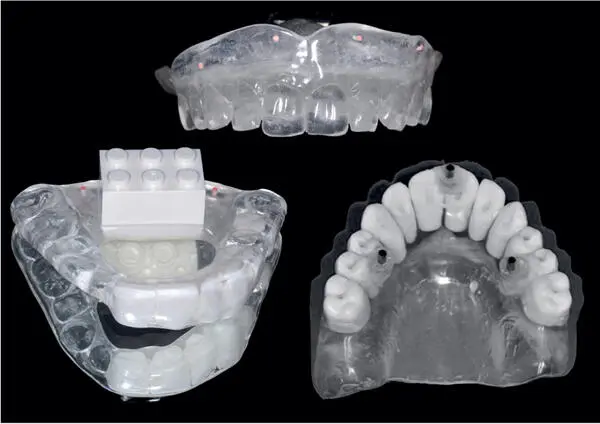
Fig 1-4-11 Laboratory fabricated radiographic templates with radioopaque reference structures (eg, a LEGO block, titanium pins, or radioopaque gutta-percha markers).
The CBCT scan with the radiologically displayed radiographic template is uploaded into the planning software and aligned and calibrated based on the reference structures. The radio-opaque prosthetic references can then be used for implant planning, but the lack of a surface scan of the actual intraoral conditions makes it difficult to identify important parameters (eg, the soft tissue thickness) relevant and useful for planning.
With most of the commercially available implant planning systems, the radiographic template has to now be sent back to the dental laboratory. The dental technician utilizes drilling tables especially developed for the planning system to fabricate the drilling guides for guided surgery in an elaborate process. The accurate fabrication of the guide is achieved by plaster fixation of the radiographic template in the correct position, followed by meticulous preparation of the sleeve bed for the respective implant position. This is a crucial step in the fabrication process and can be prone to error, even when performed by experienced dental technicians.
Alternatively, the planning data and stone cast can be sent to an industrial laboratory, where the drill guide can be fabricated via a predominantly additive process based on the aligning data and the planning data. The industrialized process step has the advantage of excluding many laboratory processing errors, but also has certain disadvantages for the implant surgeon, such as longer delivery times, higher costs, and a loss of control over the drilling guide design process.
Matching CBCT and surface scan data using planning software
With the second option, it is possible to upload and “match” (align) the surface scan data (Standard Tessellation Language [.STL] dataset) of the current intraoral situation with the CBCT data as well as with data from a scan of the wax-up (.STL dataset) (Fig 1-4-12)
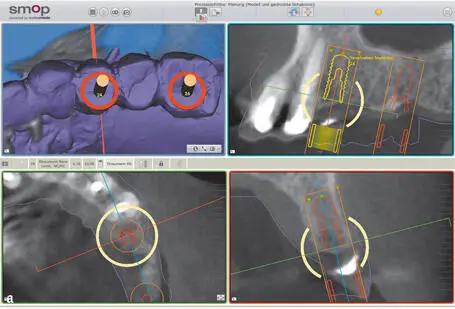


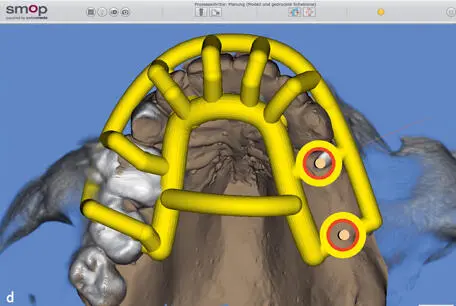
Figs 1-4-12a to 1-4-12d Example of the matching of surface scan data (.STL) of the actual intraoral situation and the virtual diagnostic wax-up with the CBCT scan. This process is important for the prosthetically oriented 3D positioning of the implant in the virtual environment of the guided surgery software.
The available software solutions allow for a decentralized workflow, ie, the use of cloud-based software enables each member of the restorative team to independently upload the datasets and perform surgical planning with all the prosthetic references. This approach affords maximum freedom of software selection. The only requirement is that the system must be able to read the data in .STL, the standard data format.
After all thorough examinations have been completed and the results and options discussed with the patient, the clinician can capture a CBCT scan and upload this data into the planning software without any preliminary work by a dental technician. After initially reviewing the data, the clinician can share the planning data and discuss the case with a colleague and/or dental technician via cloud-based technology.
With the corresponding conventional impressions or intraoral impressions, the dental technician can then produce any type of conventional/virtual setup or wax-up. This may require an intraoral try-in as an intermediate step, or may be generated by the software as .STL data. Concerning the legal questions this process may raise, it should be mentioned that in case of options 1 and 2, the person who uploads the CBCT data into the software has sovereignty over the data, while it is not possible for other partners involved to download the case data. To start the matching process, the user must first upload and open the files containing the surface scan data of the current intraoral situation and the planning data for the future restoration (wax-up or setup).
Читать дальше
